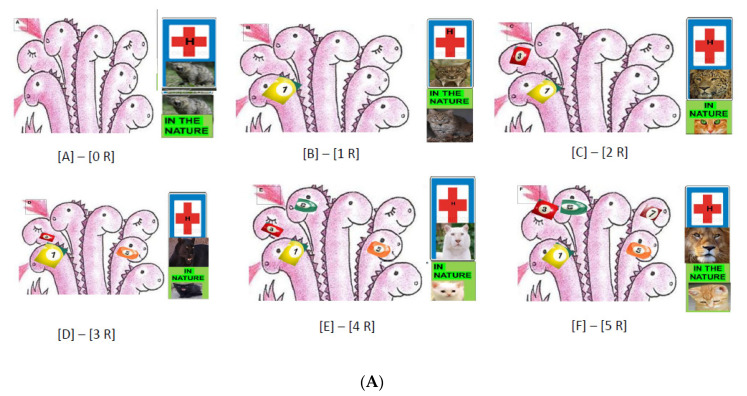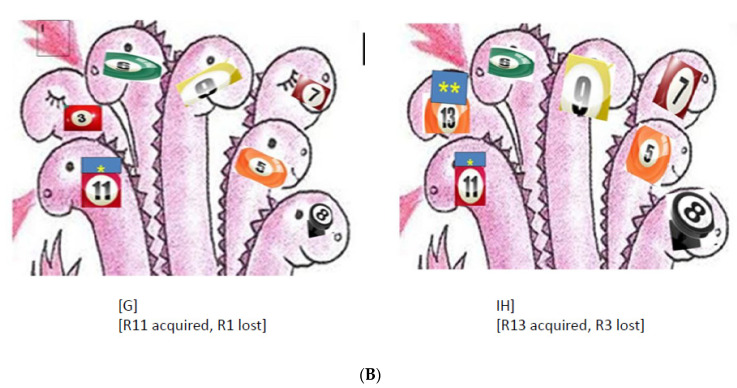Figure 2.
Illustration of Collateral Sensitivity. Trees do not grow to the sky: a metaphoric illustration that the MDR pathogens cannot be overwhelming winners in nature. In Figure 2, the pathogen bacterium is illustrated as a seven-headed monster. (A) demonstration of different trends of adaptive evolution in commensal and hospital environments. (A) Each new antibiotic resistance ([A]—[0 R]; [B]—[1 R];[C]—[2 R]; [D]—[3 R]; [E]—[4 R]; [A]—[5 R]) elevates the genetic load and reduces fitness, which makes the pathogen more vulnerable in antibiotic-free (commensal) conditions symbolized as nature (A). Under antibiotic stress conditions, hospital resistance as a positive selection marker makes the pathogen even more powerful and dangerous. (A) A pathogen without antibiotic resistance (R = 0) has similar strength in the hospital and in nature (the pathogen is symbolized as a wild cat). (B) One antibiotic resistance (R = 1) (#1) makes the pathogen a little stronger (an ounce) in the hospital and a little weaker (bobcat) in nature. (E,F) The more resistant alleles (#1, #3, #5, #6 and #1, #3, #5, #6. #7) that are present, the more strength in the hospital (symbolized ounce and lion, respectively) and elevated weakness (“baby cats”) in nature. (B) Demonstration of collateral sensitivity. (G,H) The load-bearing potential must be limited, at least the phenomenon of collateral sensitivity seems to support this forecast. When the hypothetical seven-fold resistant pathogen (resistant to antibiotics #1, #3, #5 #6, #7, #8, and #9) acquires an 8th (#11*, (G)) and a 9th (#13*, (G,H)), resistance, respectively, it drops out resistance #1 and #3, respectively.


